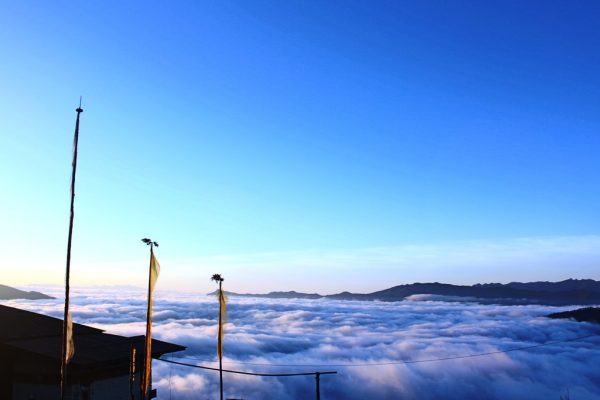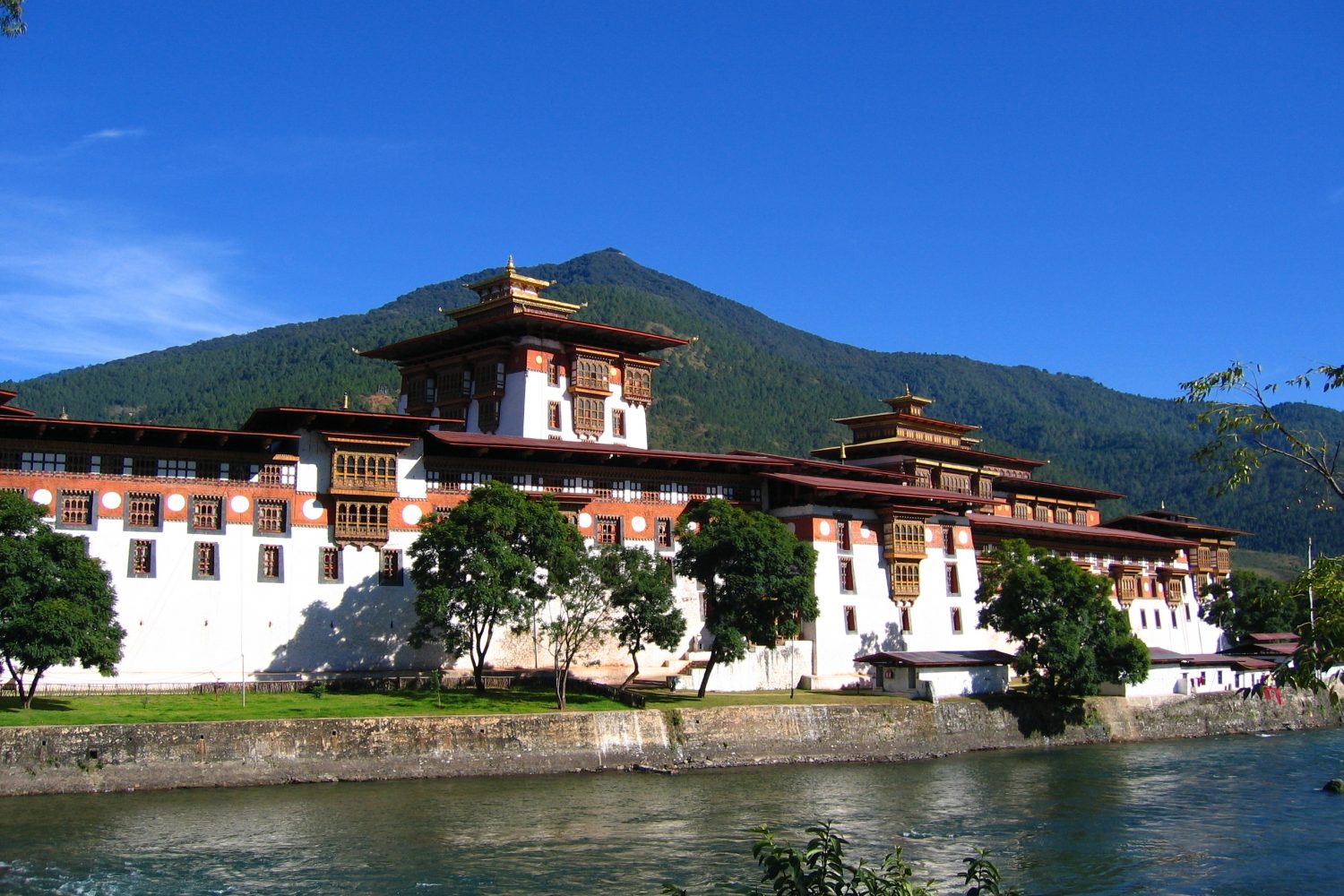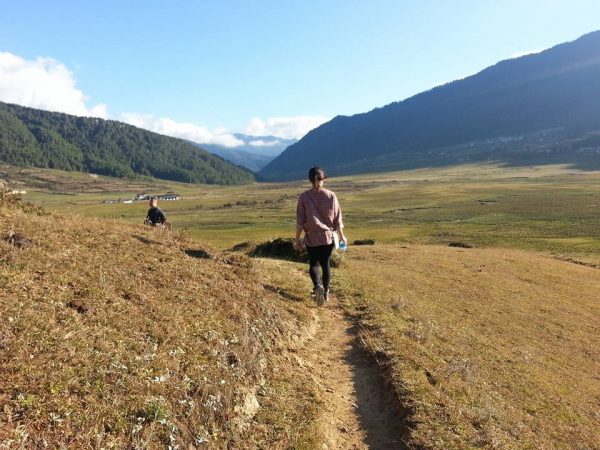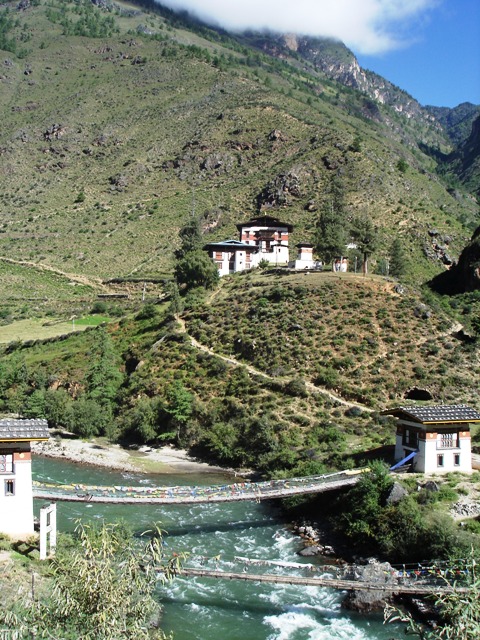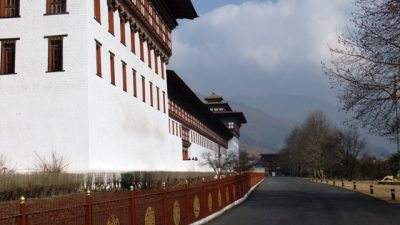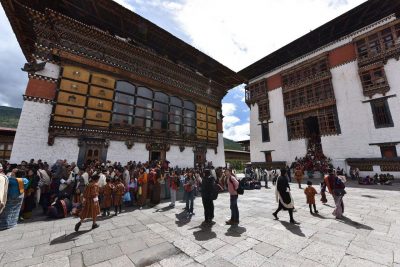Following breakfast visit the Ta Dzong museum located on the hill overlooking the Trongsa Dzong. The museums main focus is on the history of the monarchy, and is dedicated to the coronation and centenary celebrations of the Bhutanese monarchy with very rare and precious artefacts on display. These include statues built in the 17th century, to the first King’s Namza (dress), the Raven Crown and Sword of Trongsa Penlop Jigme Namgyal and the 3rd King.
Afterwards, proceed to Bumthang (2.5 hrs), one the most spectacular valleys in Bhutan and also the spiritual and historical heartland of the country. The road winds steeply up to Yo Yutung La Pass (3,400m) before descending down through dense coniferous forest to Chummey valley. From here it is about an hour to Jakar, Bumthang’s main township.
Bumthang is home to some of Bhutan’s oldest Palaces, Buddhist temples and monasteries. The valley’s barley fields, apple groves and meadows lay below huge hills which climb up towards the Himalayan mountain wall separating Bhutan from Tibet. The beautiful architecture unique to Bhutan is evident in the many large farmhouses and temples. Bumthang is associated with Guru Rimpoche (Padmasambhava) and with Terton Pemalingpa.
After lunch, visit Jakar Dzong, also known as ‘Fortress of the White Bird’. It was founded by the great grandfather of Shabdrung. The Dzong was initially built as a Monastery in 1549 but was upgraded after Shabdrung had firmly established his power in 1646. The Dzong is now used as the administration center for Bumthang valley.

